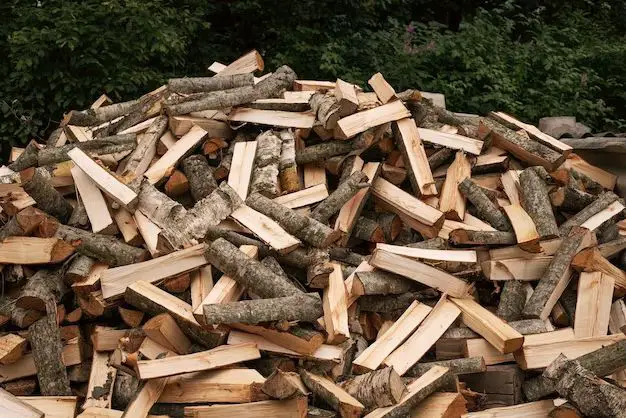A log splitter can certainly be used to make kindling, though it requires some finesse and safety precautions. Kindling refers to small pieces of wood used to start a fire in a fireplace or wood stove. While most kindling is 1-2 inches thick, using a log splitter to create kindling allows you to produce a large volume quickly.
Page Contents
How does a log splitter work?
A log splitter works by using a hydraulic ram to drive a sharpened wedge (the log splitter edge) through a log. The force splits the log along its grain. Most log splitters have either a horizontal or vertical configuration. Horizontal models have the log laying horizontally, split by a vertical wedge. Vertical models have the log standing vertically and split by a horizontal wedge.
Can you produce kindling with a log splitter?
Yes, you can produce kindling using a log splitter. Here’s how:
- Cut logs into lengths appropriate for kindling, around 12-18 inches.
- Set the log splitter to its lowest setting, if it has pressure adjustments. You want minimal force.
- Place the small logs vertically in a vertical log splitter or horizontally in a horizontal log splitter.
- Operate the log splitter to split the small logs into kindling sticks.
- Repeat this process to produce as much kindling as needed.
What safety precautions should you take?
When producing kindling on a log splitter, take these safety precautions:
- Wear safety gear like gloves, eye protection, steel-toed boots.
- Read the instruction manual and warnings for your log splitter.
- Never put hands or fingers near the splitting wedge while operating.
- Make sure logs are securely positioned before activating the splitter.
- Keep bystanders a safe distance away.
- Work on flat, stable ground.
- Focus on task and avoid distractions.
Pros of using a log splitter for kindling
- Fast and efficient – Produces a lot of kindling quickly
- Adjustable – Most log splitters allow you to adjust wedge height and pressure
- Powerful – Generates enough force to easily split small logs
- Safer than axes or mauls – Hands and body positioned away from splitting
- Uniform pieces – Creates consistently sized kindling sticks
Cons of using a log splitter for kindling
- Overkill – Like using a sledgehammer to crack nuts
- Added danger – Fingers/hands near powerful wedge
- Splintering – Can shatter small logs instead of splitting cleanly
- Expense – Log splitters are costlier than axes or mauls
- Inconvenient – Large and heavy equipment
Tips for making kindling with a log splitter
- Use straight-grained, knot-free wood species like pine, ash or poplar.
- Cut logs around 1-2 inches thick for kindling sticks.
- Wear protective gear like heavy gloves and eye protection.
- Adjust the log splitter pressure to the lowest setting.
- Hold small logs securely when splitting.
- Stop the wedge before it fully passes through the log.
- Collect kindling sticks and stack in a dry area.
Conclusion
A log splitter can be an extremely effective tool for producing kindling in high volumes. However, caution should be used as log splitters are powerful equipment designed for much larger logs. With proper precautions and technique, a log splitter can make fast work of turning small logs into perfectly sized kindling sticks.
